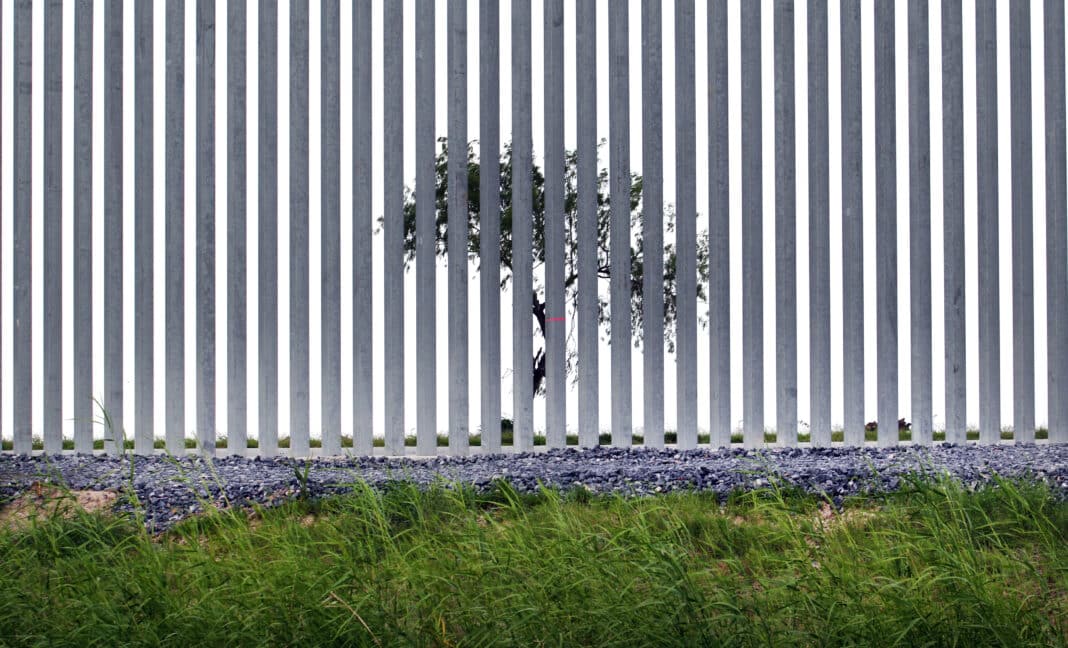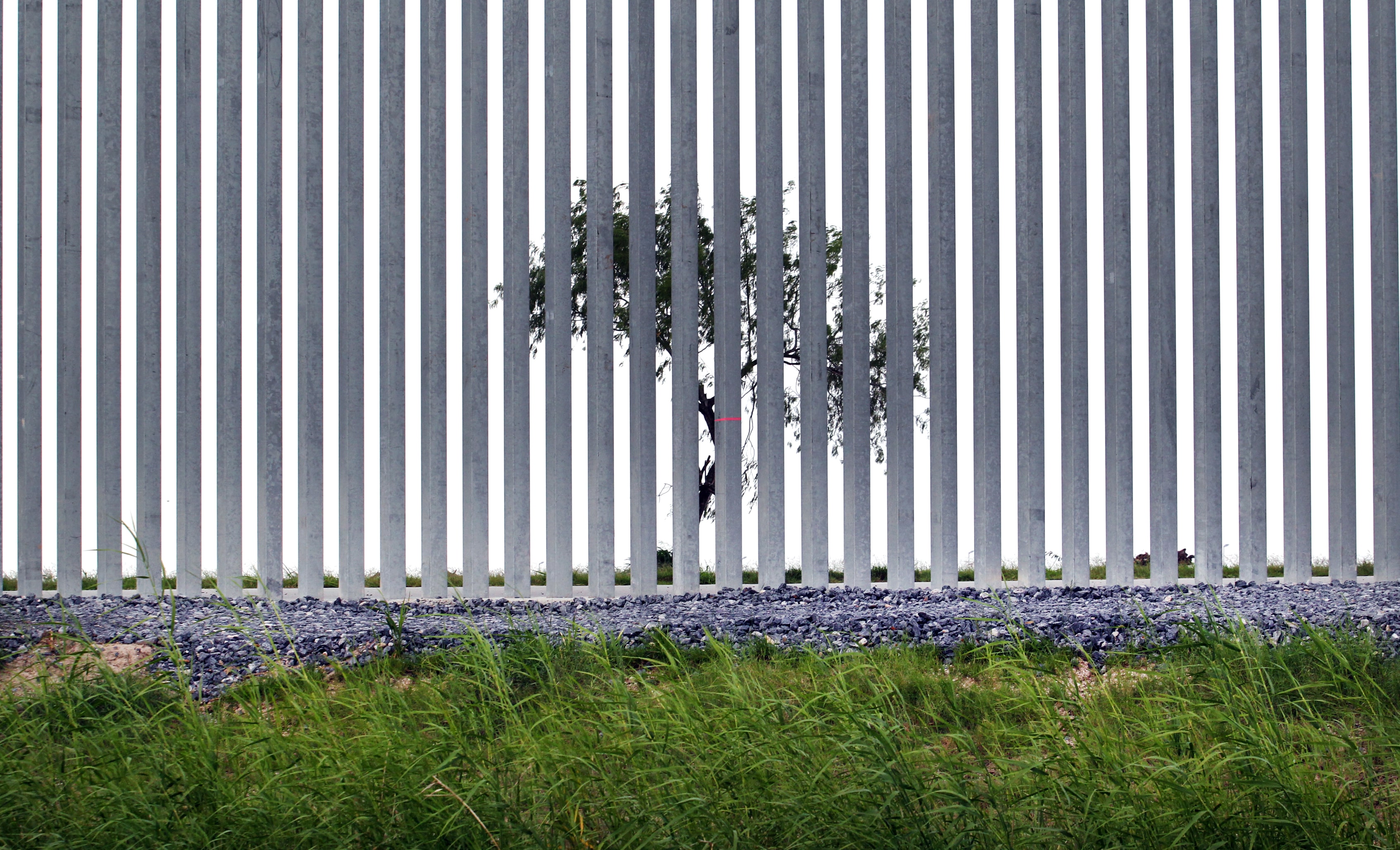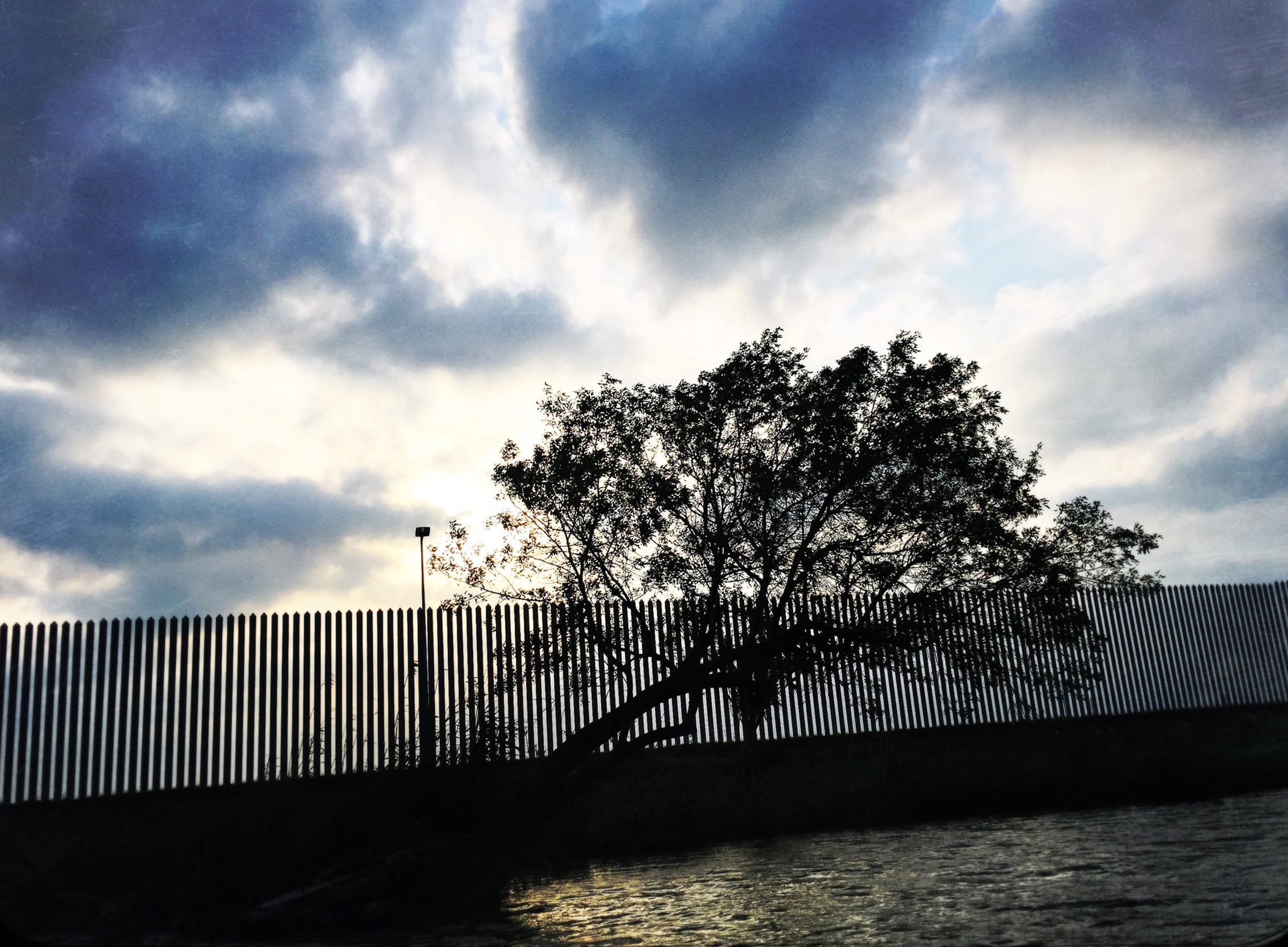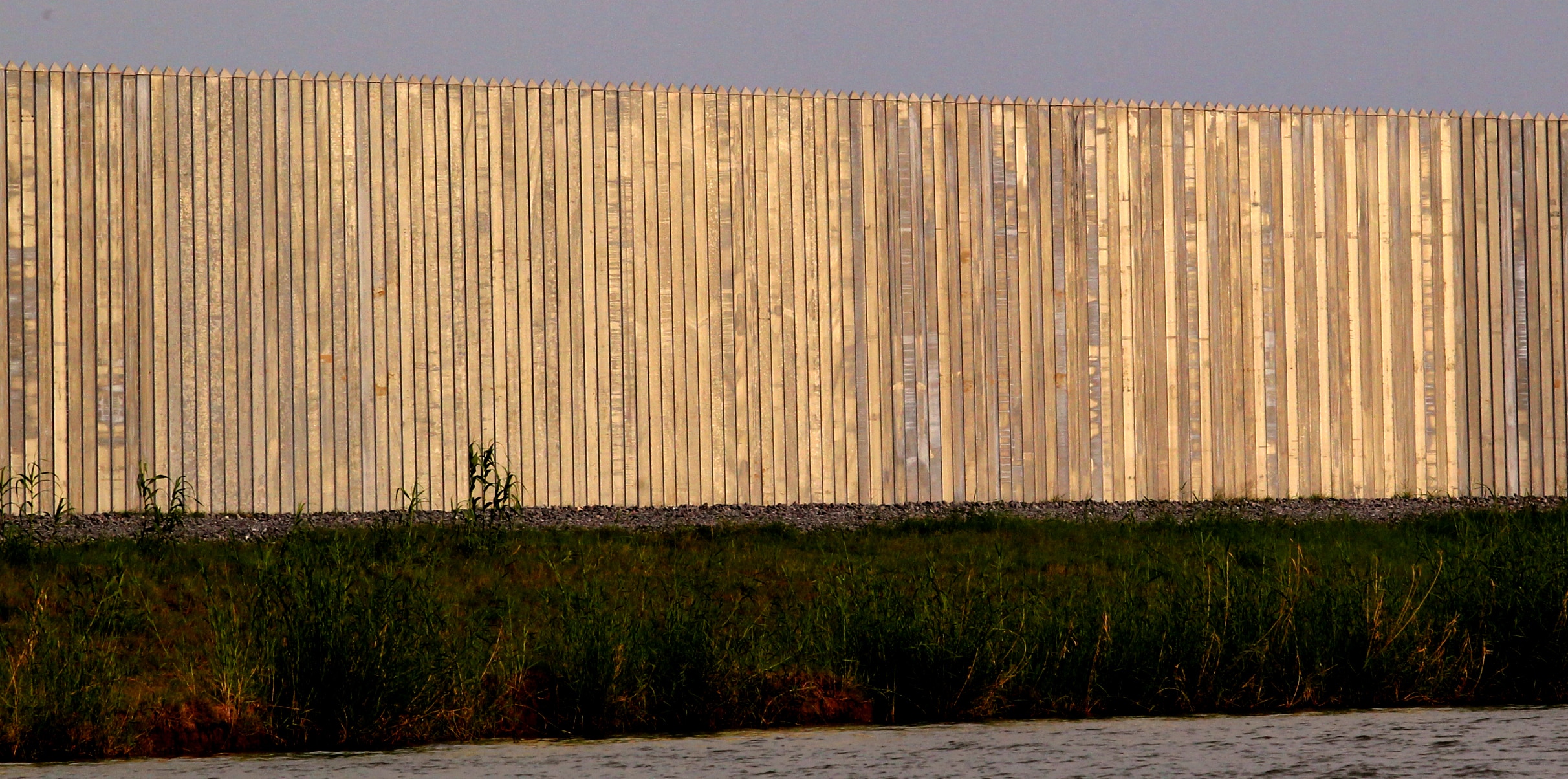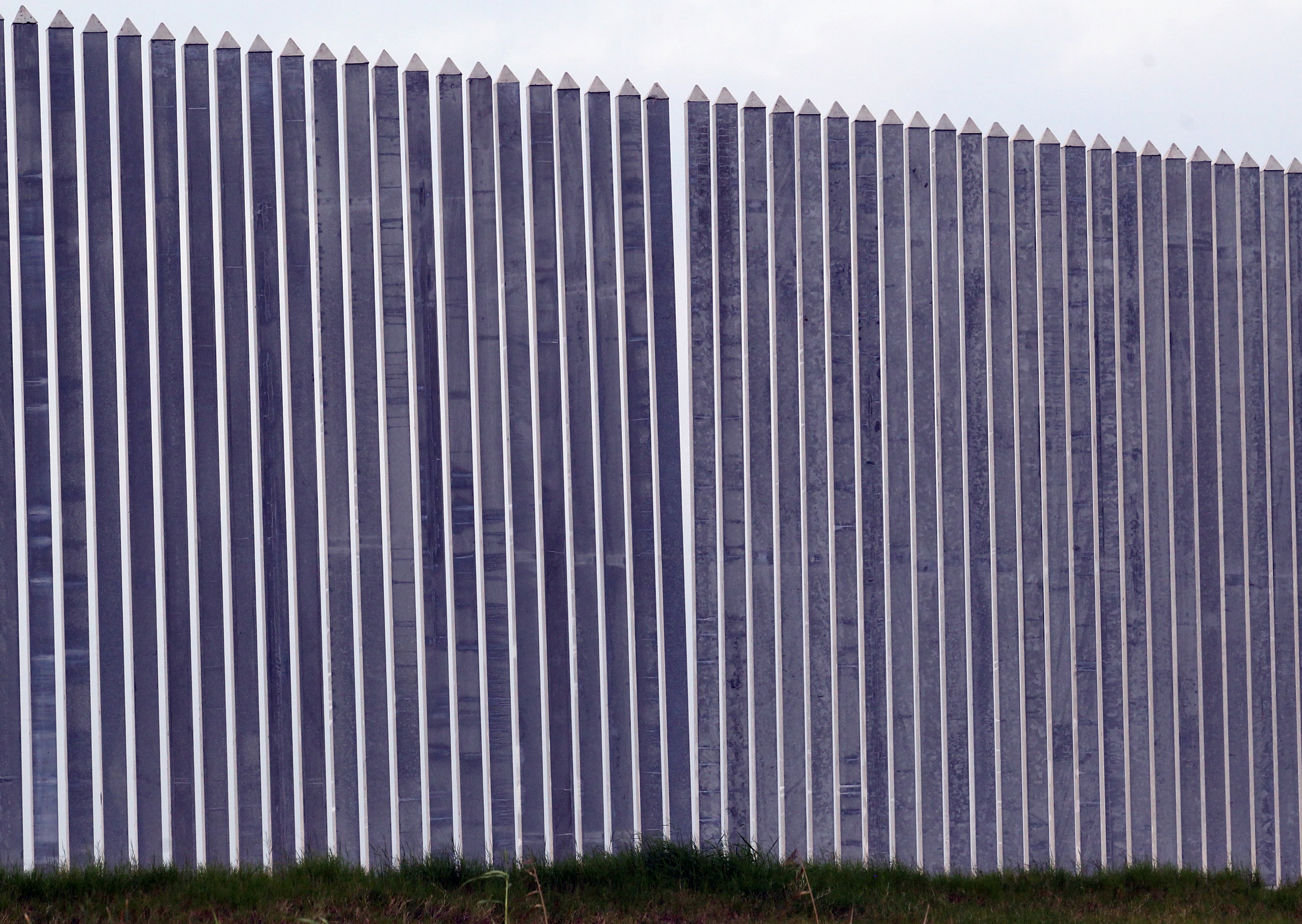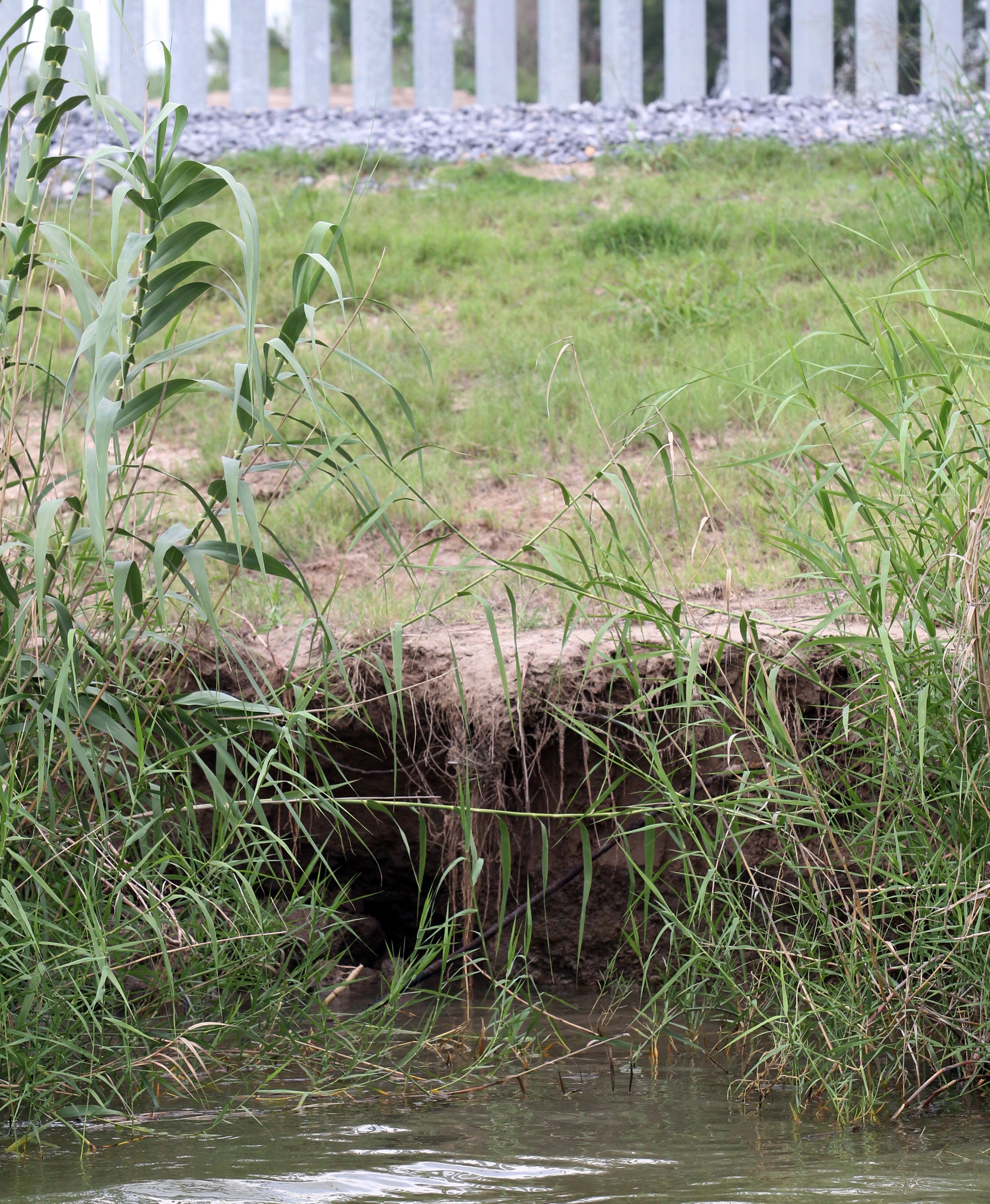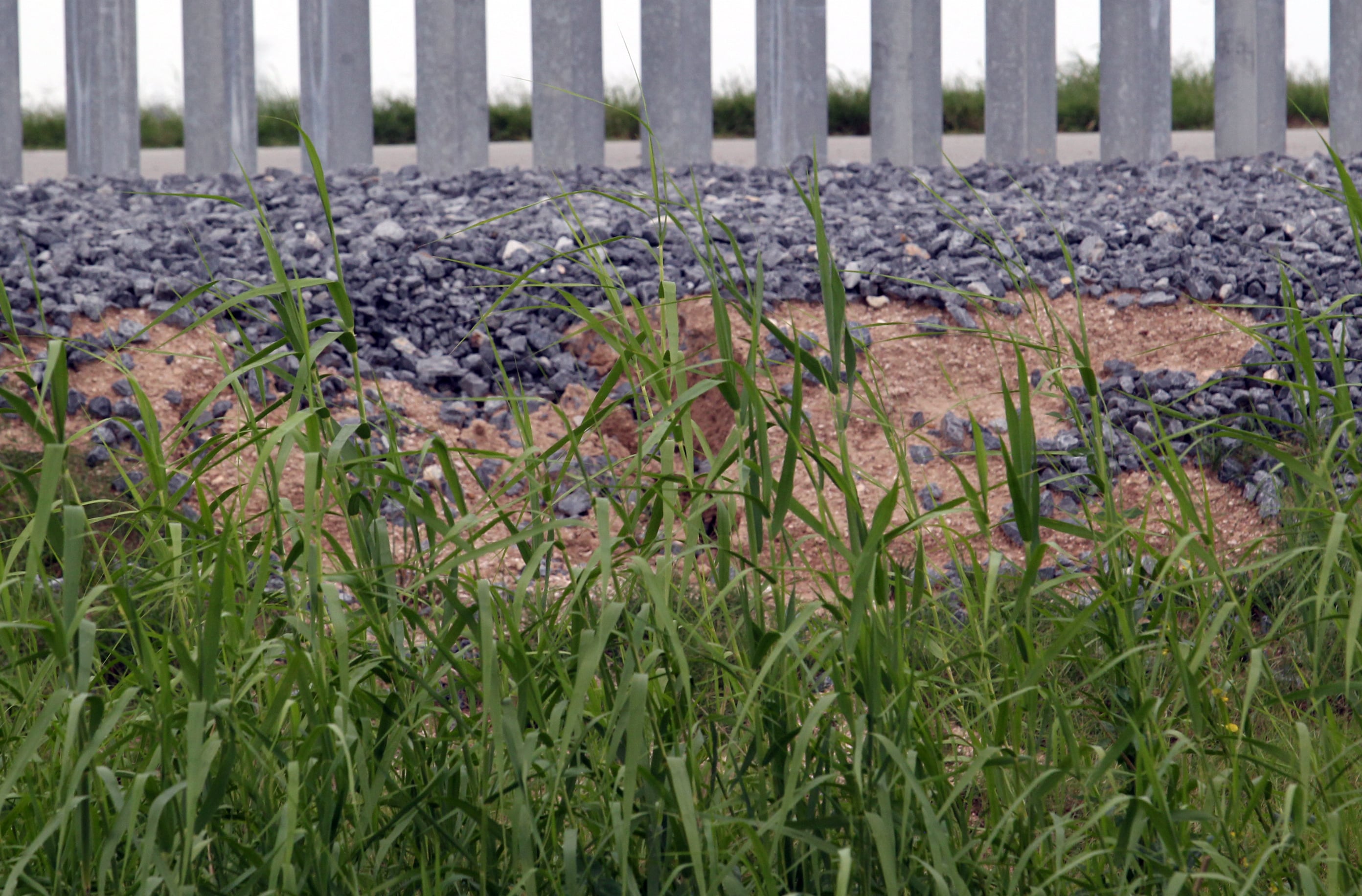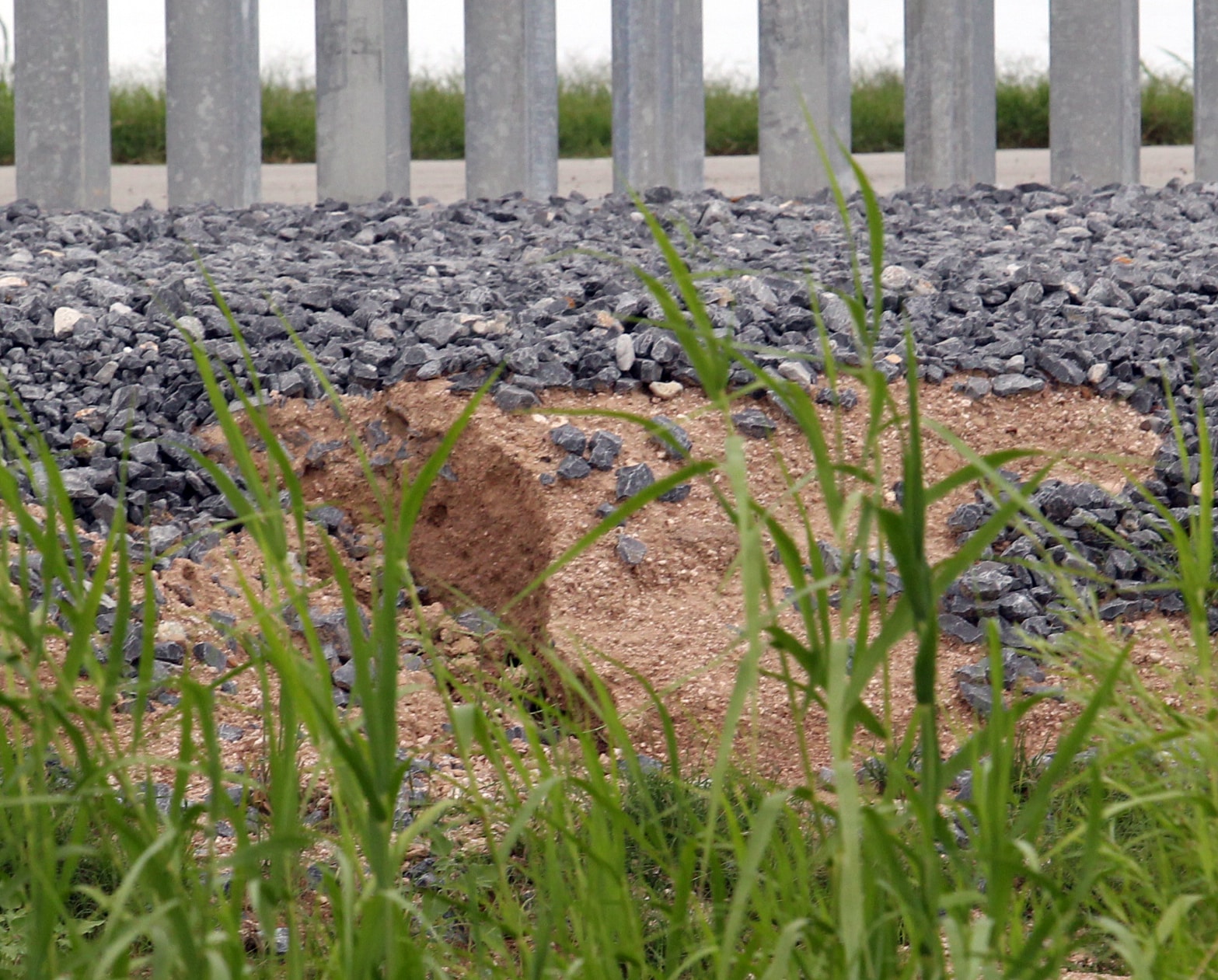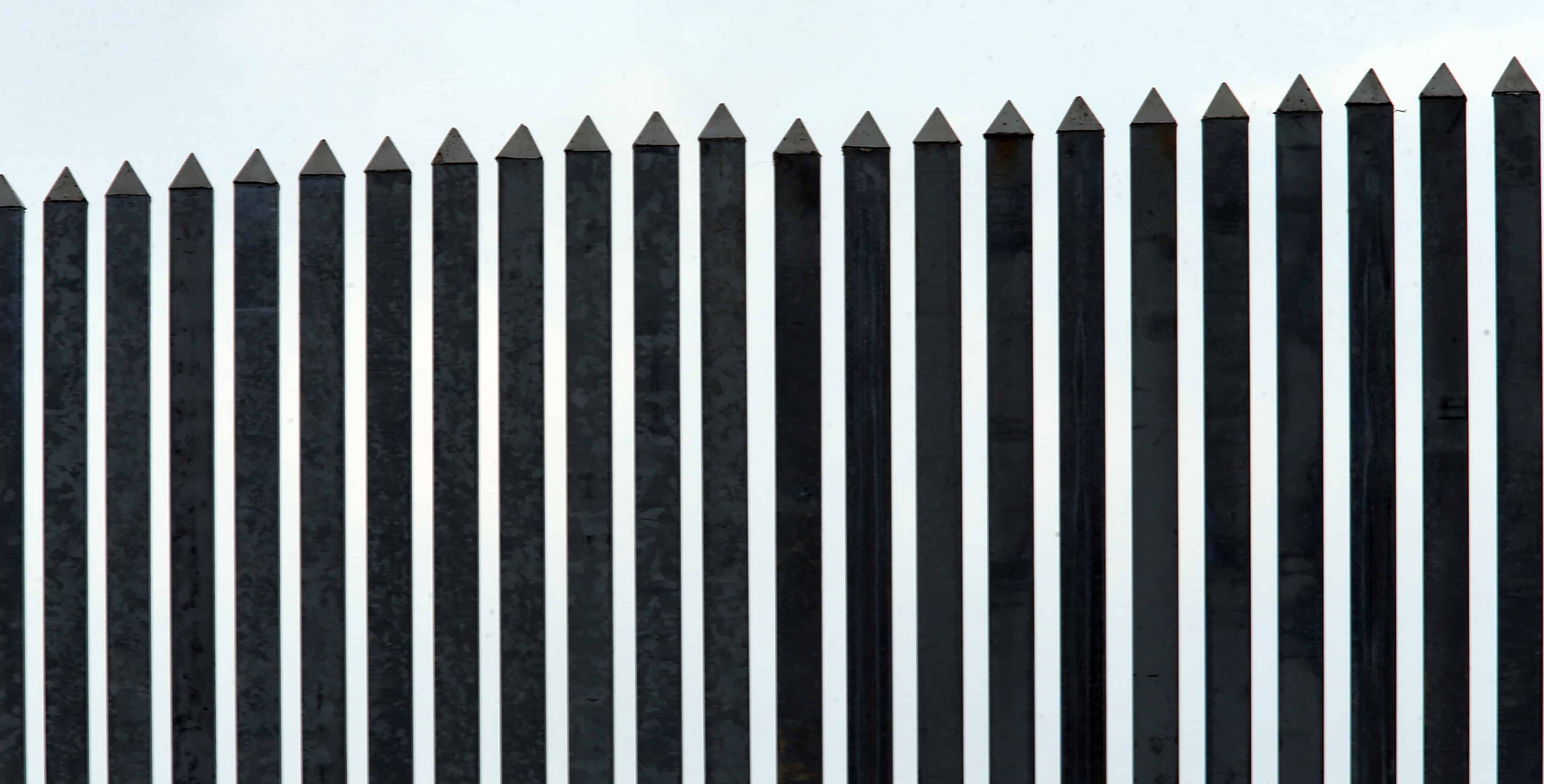MISSION — A stretch of private border wall constructed along the banks of the Rio Grande south of Mission continues to show signs of severe erosion just before the start of hurricane season.
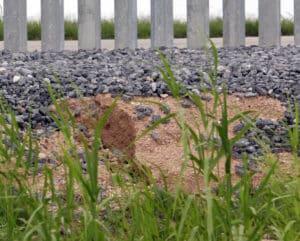
Erosion damage caused by recent rains is seen along the private border wall on Monday, May, 17,2021. (Delcia Lopez/The Monitor | [email protected])
The riverbank is eroding just around the bend from Chimney Park, where contractors could be seen Monday working at a furious pace to reconstruct concrete levee wall that had been torn apart for border wall construction under the Trump administration — construction that was subsequently halted by presidential proclamation Jan. 20.
(Read: Feds hire experts to examine private border wall)
It’s that continued erosion at the foot of the private border wall, combined with the levees left breached by the federal government, that has Marianna Treviño Wright, executive director of the National Butterfly Center, concerned the structure could come tumbling down.
“The river is washing their beach away and all of the sand is washing into the river,” Treviño Wright said of the narrow stretch of riverbank that lies in front of the 3-mile long bollard fence as she hosted a small cadre of media for a boat tour of the structure Monday afternoon.
(Photos: Erosion seen along the private wall)
Treviño Wright has long been a critic of the structure and its builder, North Dakota construction magnate Tommy Fisher.
Fisher and his companies, Fisher Sand and Gravel, constructed the galvanized steel bollard fence last January, just a stone’s throw away from where the National Butterfly Center maintains a 100-acre nature preserve.
(Read: Waiting game continues in private border wall lawsuits)
And since the beginning, Treviño Wright has lambasted the project as an ill-conceived get-rich-quick scheme that would hurt the local ecology more than it would prevent illegal immigration.
Even before the first bollard could be put in the ground, Treviño Wright and the butterfly center filed a lawsuit to try to stop the project. But their attempts — along with a similar attempt by the federal government — have been stymied in federal court for more than a year-and-a-half.
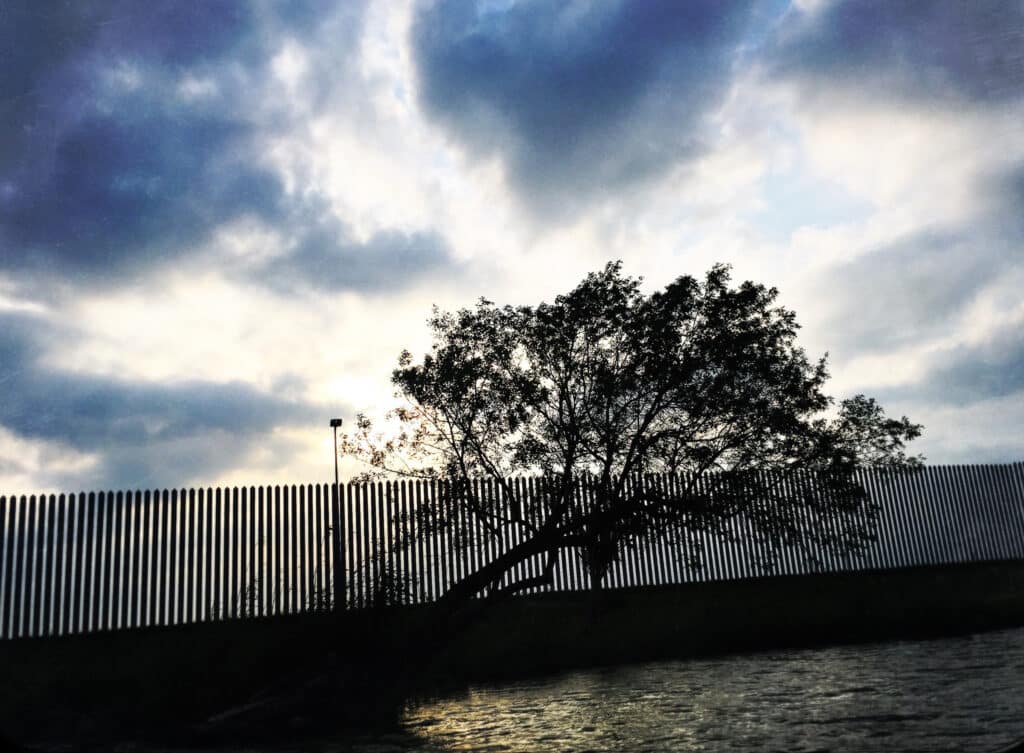
The private border wall is seen in the setting dark clouds on Monday, May, 17,2021. (Delcia Lopez/The Monitor | [email protected])
As Treviño Wright’s husband, Matt Crocker, piloted a pontoon boat through the river’s green waters Monday, the line between natural riverbank and Fisher’s artificially graded riverbank was stark.
Whereas the edge of the butterfly center’s land met the water in a tumble of native plants and trees that stretched their branches toward the water, the bank in front of the glittering wall instead drew a jagged line of miniature cliffs with eddies of water swirling in their shadows.
To be sure, some portions of the natural riverbank also showed evidence of scarping — signs of how Mother Nature uses the lapping of waves to claw chunks of soil from the edges of the riverbank, but none so consistent as along the 3 miles of Fisher’s wall.
(Read: Fate of private border wall unclear)
More concerning was how much riverbank disappeared between Aug. 3, 2020, when Fisher led the media on a walking tour of the structure, and Monday, when a soggy Rio Grande Valley was still recovering from one of its traditional May rainstorms.
In court, Fisher said he had built his wall between 30 to 35 feet from the edge of the water. He had used earth movers to shave the land, creating an artificially gentled slope at a 5-to-1 ratio — something he assured would help minimize erosion.
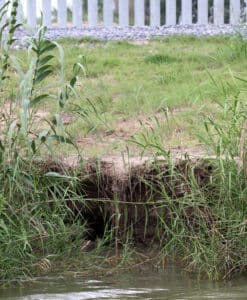
Erosion damage caused by recent rains near the private border wall on Monday, May, 17,2021. Recent rain fall (Delcia Lopez/The Monitor | [email protected])
His wall got its first test last summer, when summer rainstorms and the passage of Hurricane Hanna carved away wide swaths of riverbank.
Last fall, Fisher insisted he had corrected any erosion hotspots by installing small stones, akin to rip-rap, along the base of the wall. But just a few months later, the water has creeped ever closer to the ribbon of steel. In some places, that 30-35 feet of riverbank has shrunk by about half.
“As you can see, these sections are already dropping, and we haven’t had a major rain event,” Crocker said as the boat drifted past a particularly bad section of erosion.
“You can see how much has washed away here. It used to be 30-35 feet from fence to the water. It’s already gone,” he said.
Treviño Wright is also concerned about a phenomenon she noted just after this weekend’s rainstorms.
During one of her regular boat patrols of the riverbank, she saw runoff clouding the water. It appeared to be coming from underneath the wall, discharging from drainage pipes built underneath the structure.
(Read: Butterfly Center, feds get look at private wall erosion post-Hanna)
“What we saw was a mud flow,” Treviño Wright said.
“We had the clear river and then an area where there was very dirty water washing into the river and then it was cloudy, dark, dirty… a very distinct line where that heavy dirty water was entering,” she said.
She worries the runoff may have contained industrial or agricultural contaminants, since the land immediately behind the wall is still an active sugarcane farm.
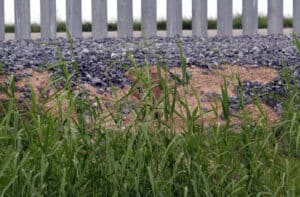
Deep chasms are seen underneath the landscape gray rocks along the private border wall on Monday, May, 17,2021. (Delcia Lopez/The Monitor | [email protected])
Her concerns led her to reach out to the Environmental Protection Agency, which she hopes will investigate the discharge.
In the meantime, the butterfly center’s lawsuit against Fisher, his companies, and a host of other defendants remains in limbo.
On May 5, a federal judge ordered a stay on discovery against two of the named defendants in the case — the nonprofit fundraising organization We Build the Wall and its founder, Brian Kolfage.
With discovery against them temporarily at a standstill, the butterfly center is effectively halted from conducting discovery — such as depositions — on any of the other defendants.
Its case also remains tied to the government’s lawsuit against Fisher.
The government filed its suit on behalf of the International Boundary and Water Commission, alleging the structure puts the United States in violation of a 1970 international boundary treaty with Mexico.
During that same May 5 hearing, government attorneys said they had hired the global engineering firm Arcadis to examine the wall and its foundations.
And late Monday afternoon, those same attorneys filed a motion with the court requesting that Neuhaus and Sons — the landowners who sold the strip of land to Fisher and his companies last year — be dismissed from the lawsuit.
Neuhaus and Sons remain named defendants in the butterfly center’s suit.

